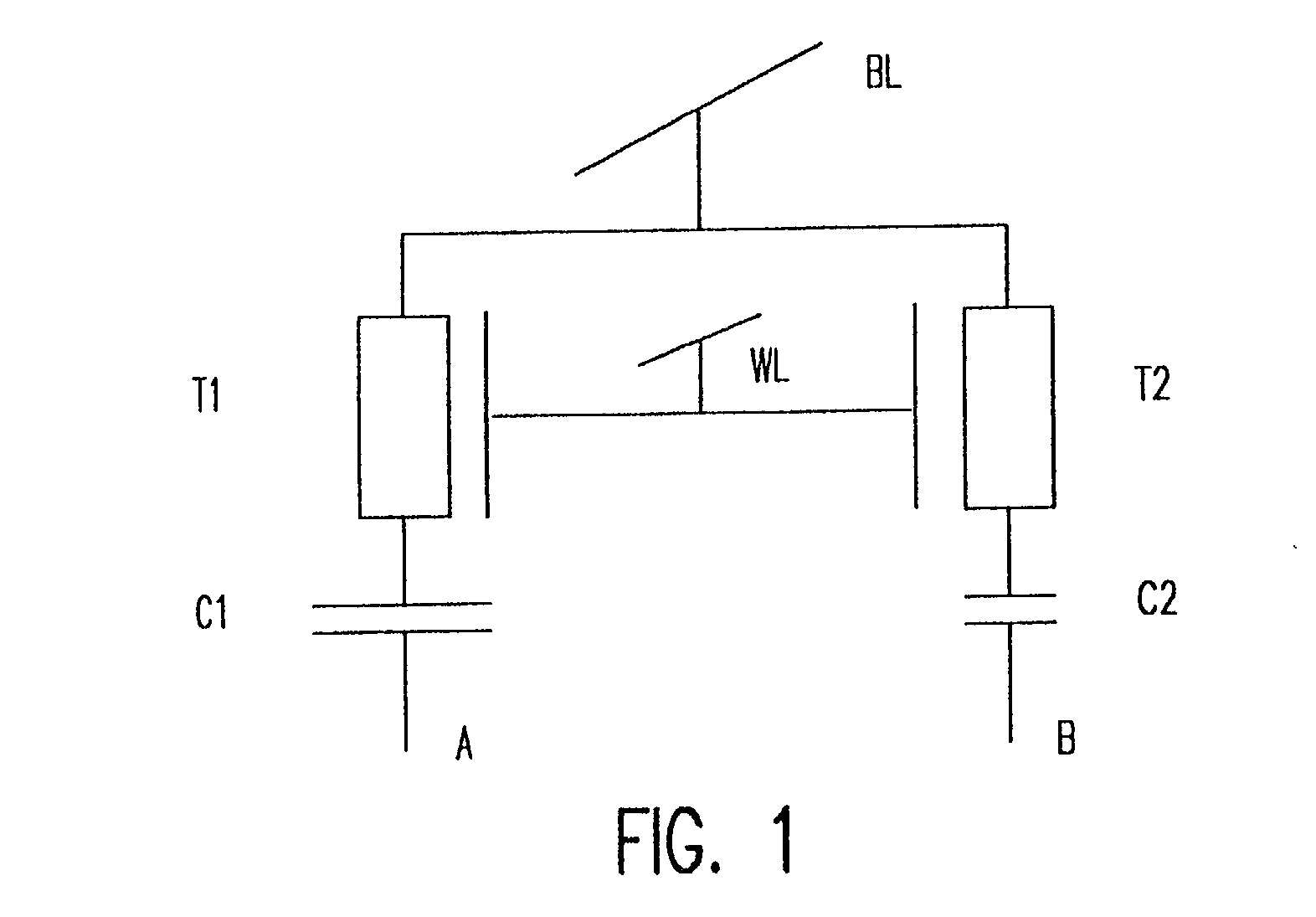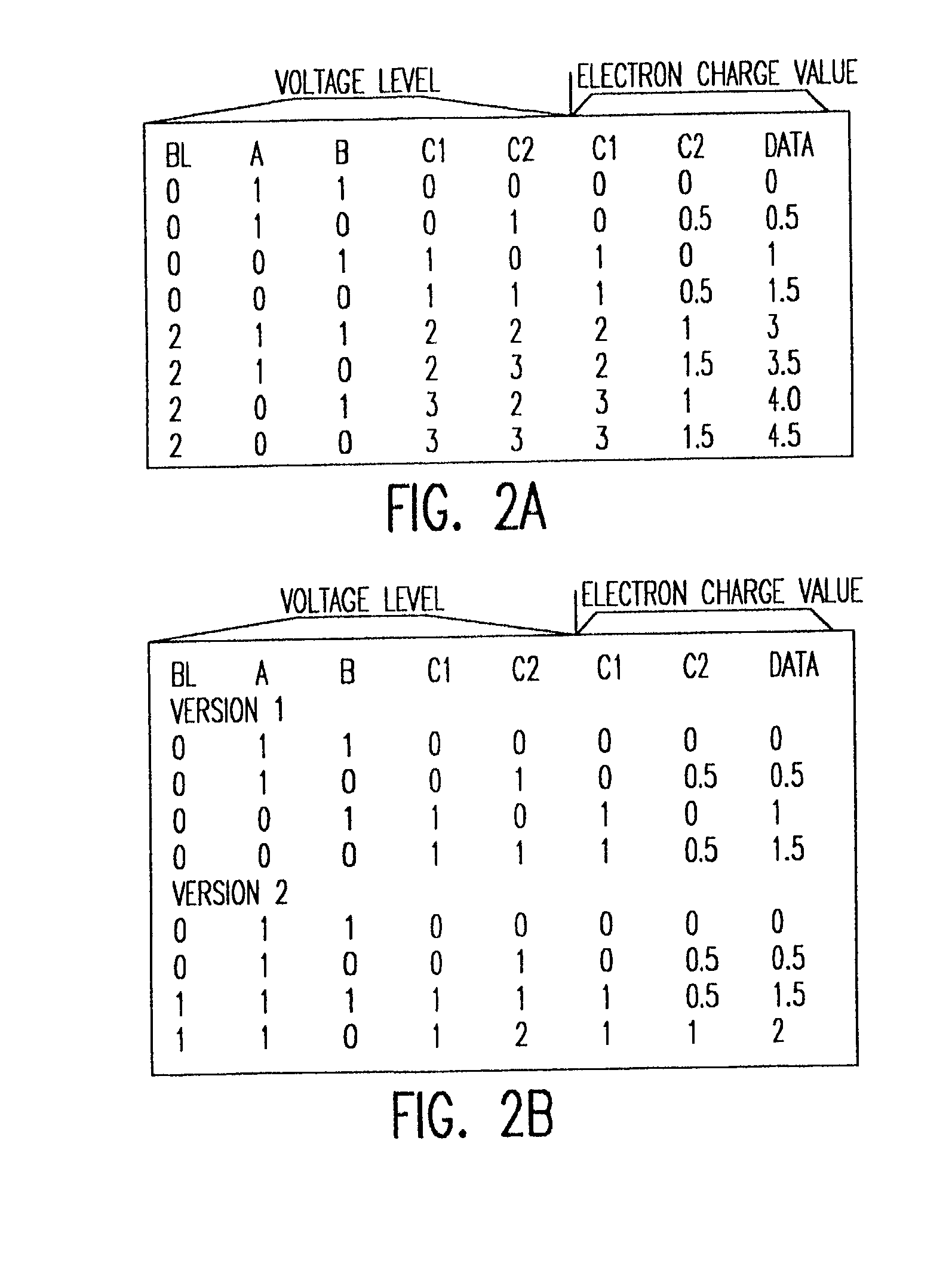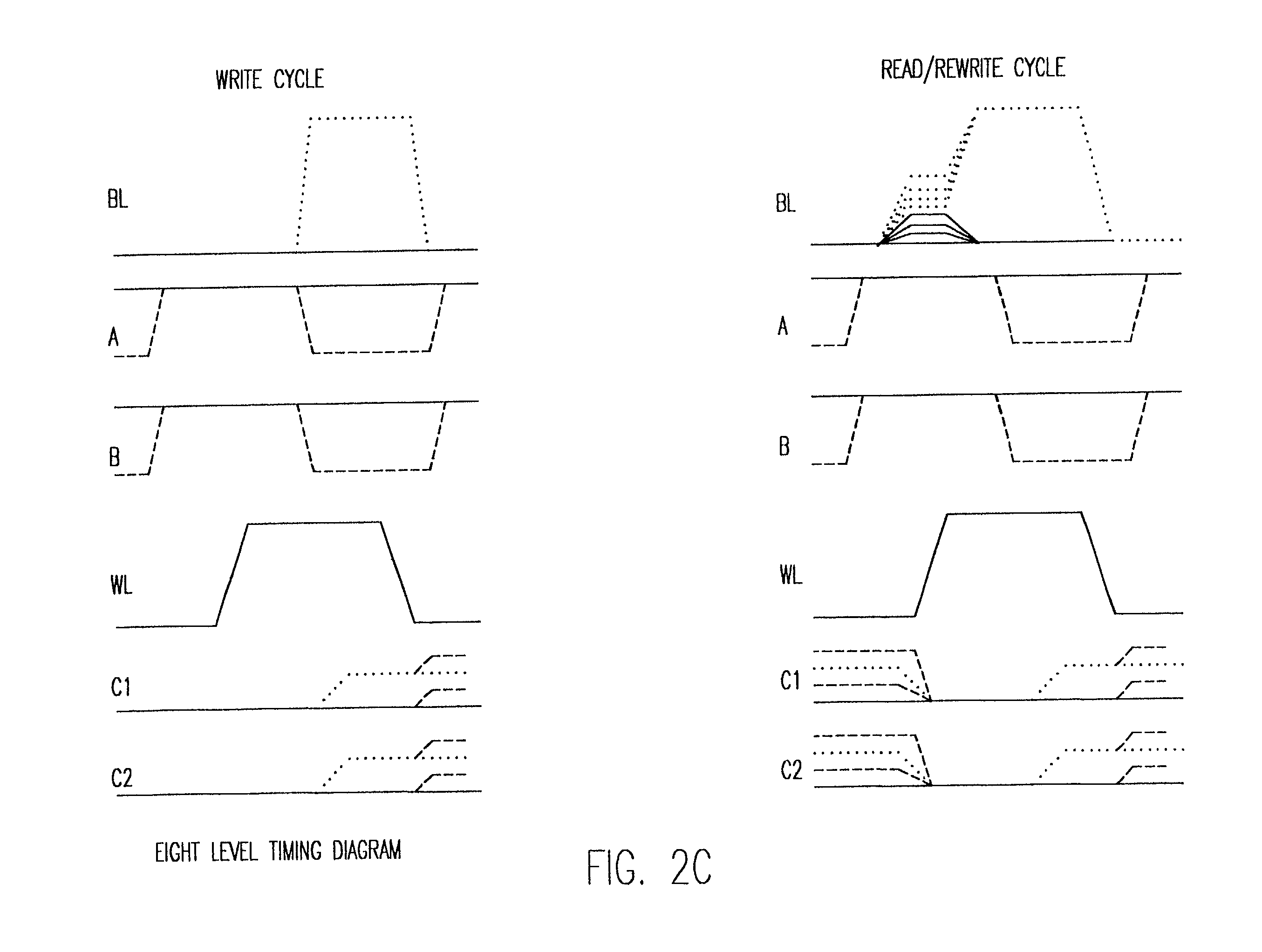Multi-level dram trench store utilizing two capacitors and two plates
a trench store and capacitor technology, applied in the field of dynamic random access memory, can solve the problems of requiring an unacceptable chip size and economic cost, little design development available at the cell level, and a loss in manufacturing economy
- Summary
- Abstract
- Description
- Claims
- Application Information
AI Technical Summary
Benefits of technology
Problems solved by technology
Method used
Image
Examples
Embodiment Construction
[0033] Referring now to the drawings, and more particularly to FIG. 1, there is shown a schematic diagram of a memory cell in accordance with the invention. The memory cell comprises two capacitors C1 and C2, each having a transistor, T1 and T2, respectively, connected in series therewith between a terminal of each capacitor and a bit line, BL. The transistors are controlled in common by having their gates commonly connected to a word line, WL. The other plate of the respective capacitors C1 and C2 is connected to a respective input A or B.
[0034] This latter feature of the invention is a departure from the design of known multi-level stores since known multi-level stores invariably rely on providing multiple voltage levels through the bit line; leading to substantial switching complexity as well as requiring multiple voltage level sources and possibly extended write, read, and cycle times if data is encoded as a combination of voltages on two or more capacitors (which must then be w...
PUM
| Property | Measurement | Unit |
|---|---|---|
| Time | aaaaa | aaaaa |
| Electrical conductor | aaaaa | aaaaa |
| Electric potential / voltage | aaaaa | aaaaa |
Abstract
Description
Claims
Application Information
 Login to View More
Login to View More - R&D
- Intellectual Property
- Life Sciences
- Materials
- Tech Scout
- Unparalleled Data Quality
- Higher Quality Content
- 60% Fewer Hallucinations
Browse by: Latest US Patents, China's latest patents, Technical Efficacy Thesaurus, Application Domain, Technology Topic, Popular Technical Reports.
© 2025 PatSnap. All rights reserved.Legal|Privacy policy|Modern Slavery Act Transparency Statement|Sitemap|About US| Contact US: help@patsnap.com



